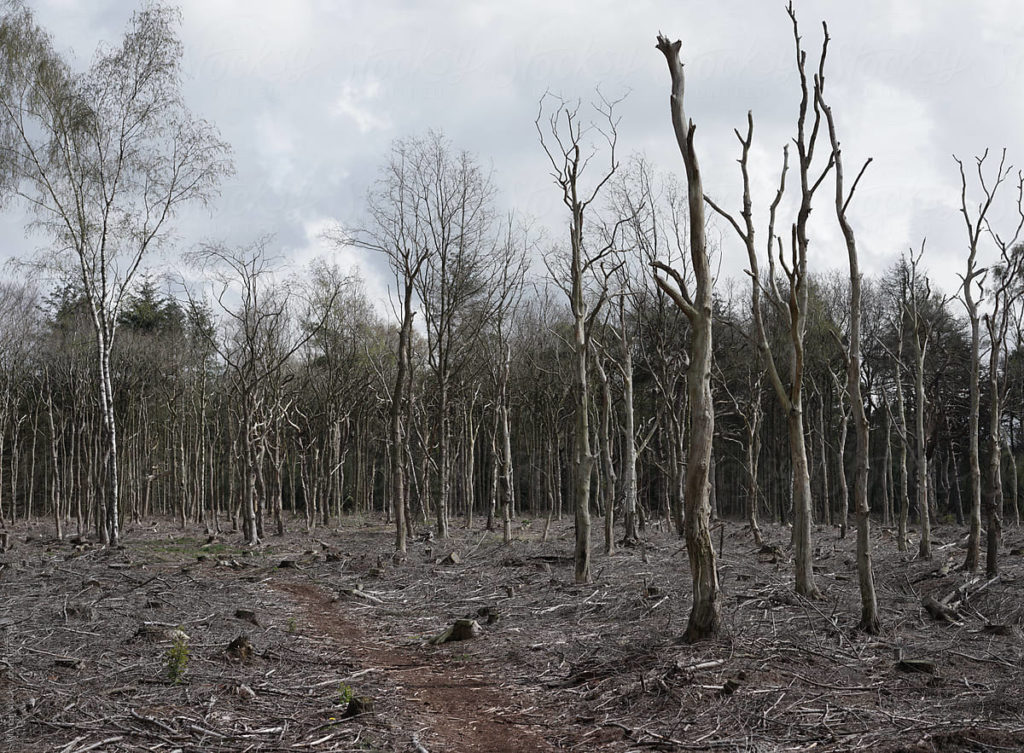Doug Stone topped the country charts in 1993 with a song about why the other guy always wins the girl’s heart. “He sends her roses, and lines he composes,” he sang. “He’s there to hold her when she needs a shoulder… He says he needs her, tells her he loves her.” All of which concludes with the self-deprecating “Why didn’t I think of that?”
The song was a hit because the character’s loss was relatable to millions of shy men, but also because of the humor in it – what he failed to see seemed so obvious to everyone else.
It reminds me of government agencies whose proposals completely miss realities that seem obvious to everyone else.
This week, the public comment period expired on a bizarre and controversial plan to store carbon dioxide (CO2) under the national forests. Not in the forests, or in the trees, but under them. In the ground. Where holes must be dug, disturbing the soil and perhaps the trees – trees that are nature’s most perfect places for storing CO2.
We have seen varying proposals for more than 20 years to capture and store CO2, to keep it from the atmosphere. Elaborate plans for “carbon capture and sequestration” and the like have been touted for a generation, leading companies around the world to jump on the bandwagon. The concept is to capture CO2 just before it leaves the smokestack, turn it back into solids, and then “store” it somewhere safe, mostly by burying it.
For large industrial companies that would otherwise be under the government’s regulatory thumb, the idea is not to change their ways, not to stop emitting CO2 into the air, heaven forbid. No, this ingenious alternative is simply to buy credits elsewhere from a company that either owns lots of forest land or has some other way of claiming to “store” CO2. What a racket. The carbon company gets to make millions by selling credits for things it was already doing, and the industrial buyer gets to look greener without having to change anything.
That’s why American Airlines is being lauded for the genius new idea of buying carbon credits in the form of bricks made from bark or sawdust, which will then be buried to make sure they never decompose, while the airline gets to continue flying its highly profitable planes. Win-win!
No article touting that plan has even tried to claim there would be less CO2 in the atmosphere afterwards. But believe me, lots of people will be wealthier than before, thanks both to continually increasing air fares, and government subsidies for “carbon capture and storage.”
It gets even sillier with this new proposal for storing CO2 under national forests. The U.S. Forest Service proposes a new regulatory scheme not just allowing but subsidizing the burying of CO2 in the ground under the forests, with billions of dollars in tax incentives and direct government spending. Officials propose that CO2 from factories and power plants be captured and transported to underground “injection sites” in the forests.
The idea has become highly controversial, especially with environmental groups, because the transportation would require thousands of miles of new pipelines, which in turn requires clearing vast swaths of trees. These are type of pipelines the government opposes – even prohibits – except if they are built by the government, of course. One recent private CO2 pipeline project would have crossed five states, but it was cancelled because of government regulatory “uncertainty.”
Now the Forest Service proposes a change in regulations, called “Land Uses; Special Uses; Carbon Capture and Storage Exemption.” The agency is quick to stipulate that any such plans must still comply with environmental laws, so why the “exemption?” What does burying CO2 under the trees need to be exempt from? Apparently, from laws that specify permitted uses of national forest land, laws that do not include digging holes to bury CO2.

The great irony in this controversy is that everyone else already sees the clear role the Forest Service is supposed to play in reducing CO2 emissions – managing healthy forests. Forests store at least 15 percent of all the CO2 emissions in the country and could store far more. But they change from massive carbon stores to massive carbon emitters when they die, rot, and burn.
For the Forest Service, the far better idea everyone else sees is simpler. Manage healthy forests and vastly improve natural carbon storage. Coincidentally, that’s the agency’s actual job under the law. Now why didn’t they think of that?




Comments on this entry are closed.